The Best Ages for Having Braces

If you have a desire to get braces, we commend you for choosing to have a better smile! Studies show that a better, straighter smile can increase your confidence, success and professional life. However, there are some key ages that having braces are the best for patients. If you have bite and alignment issues, it’s best to receive child orthodontics. For straightening, the teenage years are the best for wearing having braces. However, braces can benefit patients at any age and may even be needed more than once in life. Find out what orthodontic treatment can do for you at any age!
Child Orthodontics
The American Association of Orthodontics recommends that children have their first orthodontic visit between the ages of 7 and 8. Having and examination early as a child will detect bite and alignment issues that can become severe later on in life. This early visit is something that you definitely want your child to receive, as bite and alignment issues can lead to problems with speech. If the baby teeth are misaligned, then the adult, permanent teeth will come in misaligned as well. This will eventually lead to cracked, chipped or broken teeth when chewing and biting, as different teeth will take on different amounts of pressure.
There are several different types of bite problems children can have. One is crossbite, where one or more teeth are turned either in towards the tongue or out towards the cheek. Overbite is when the upper teeth overlap the lower teeth too much. Underbite is when the lower front teeth overlap the upper front teeth. In a healthy smile, the upper front teeth will rest on top of (and just a tiny bit forward) of the lower front teeth. If your child does have a bite or alignment problem, it’s easiest to fix while they are young, as the jaw is still growing and forming. Between 7 and 8 years old is the best time for having braces as a child to correct this problem.

Adult Orthodontics
Having braces as a teenager can vary depending on when all the permanent teeth come in. Once the permanent teeth have come in (somewhere around age 12), a child should be seen for a consultation. This is great time to straighten the teeth as the jaw is still growing. However, later in the teenage years and afterwards, the jaw will stop growing and straightening the teeth becomes harder. That is why the teenage years are the best to straighten a child’s teeth. Not only will having braces straighten crooked teeth, but they can also help your child have more confidence because they will produce a beautiful, straight smile after treatment. Straighter teeth are proven to boost confidence in children, teens and adults alike.
Adults benefit from receiving braces at any age. Even though the jaw has stopped forming, it’s never too late to get braces (except if you are in later years and losing your teeth). About 25% of people who have braces are adults. Getting a straighter teeth can boost your confidence and social life. Studies show that employers also hire someone with straight teeth over someone with crooked teeth. Other studies show that people find you more attractive, trustworthy, and datable if you have straight teeth.
Braces Options
Your options for braces will vary slightly depending on your age. In the past, traditional metal braces were your only option for straightening your teeth. This option is the one that has metal brackets attached to the center part of your teeth with a metal wire that goes through them on top and bottom. Metal braces aren’t your only option for treatment. For children, metal and ceramic braces are the best choices and the most economical. Ceramic braces mimic metal braces and have brackets and wires. However, instead of metal, these appliances are made from ceramic material, which matches the natural whiteness of your teeth. This is why they are sometimes known as “clear braces”.
For a more discreet look, lingual braces are also an option for adults. These are metal braces worn on the back of the teeth and custom-fitted to each tooth. However, the most discreet option for having braces is Invisalign. This is a series of transparent aligners that we custom-make for your mouth. You switch out the aligners every week and watch as your smile transforms. The best part about this option is that you can remove the aligners for eating, drinking, brushing your teeth, sports and more.

A Beautiful Smile at Any Age
No matter what option you choose, we know you will love the smile you’ll receive by having braces. Braces are not solely for children or teenagers, but also for adults. It doesn’t matter if you are 7 or 57; braces are great for patients at any age! Having braces will significantly reduce your risk for tooth decay and gum disease as well as broken, cracked or chipped teeth. They can get you ahead in life by helping you feel and appear more confident and successful. To answer the question about the best ages for braces, we say the best time is now! To learn more about what to expect with braces, call Belmar Orthodontics today at (303) 225-9016!
How Important Is it to Wear Your Orthodontic Rubber Bands?
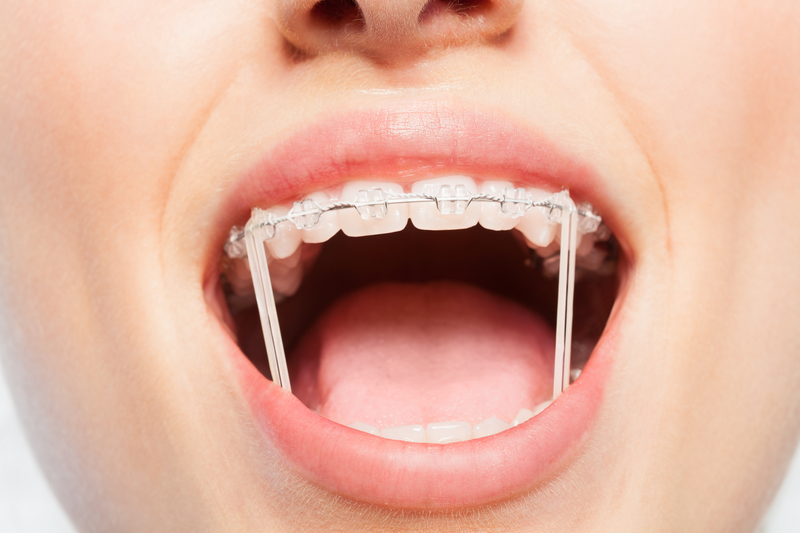
Wearing rubber bands is a critical part of your orthodontic treatment. We ask you to wear them 24 hours a day because they are that critical to the process of straightening your teeth. Knowing why your orthodontic rubber bands are important will help you wear them more. Consider the following reasons you need to wear your bands the next time you are tempted to put them aside.
Types of Braces
We offer several different types of braces at our office. Patients wear orthodontic rubber bands when they have traditional metal braces and ceramic braces. When you think of braces, you probably think of metal braces. These are the ones with square brackets on the front of each tooth and a wire that goes through the brackets on top and bottom. Metal braces are the most economical choice when choosing orthodontic care.
A close cousin to metal braces are clear, ceramic braces. These braces look and act like metal braces, except they are white. They have a white color to them because they are made out of ceramic material, which blends into the natural whiteness of your teeth. This is why they are known as “clear braces”. Ceramic material helps decrease demineralization that can happen when patients wear braces and don’t practice good oral hygiene habits. Both types of braces (metal and ceramic) use orthodontic rubber bands at times to move the teeth in a particular direction.
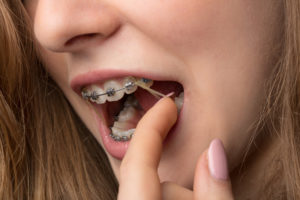
Parts of Braces
Each part of your braces is important when it comes to straightening your teeth in the best way possible in the quickest way possible. Your treatment would be lacking if you were missing any part of your braces, including orthodontic rubber bands.
- Bands – A band is a thin ring fitted to a back molar and cemented to the molar. This is usually made of stainless steel and secures other orthodontic attachments such as hooks, brackets or tubes.
- Brackets – A bracket can be bonded to the tooth with cement or it can be attached to a band. Brackets are usually made of stainless steel or clear ceramic material. They guide and support the archwire into its proper placement.
- Archwire – The archwire guides the shifting of the teeth during orthodontic treatment. Orthodontic attachments (such as the brackets) hold these wires and are made from stainless steel. Some archwires are made of titanium instead of stainless steel.
- Elastic Ties – Available in a variety of colors, elastic ties are small rubber bands that go over the brackets in order to hold the archwire in place.
- Springs – We open or close a space between teeth using the force of a small spring. These springs go between brackets and around the archwire, and are made of stainless steel or titanium.
- Orthodontic Rubber Bands
Orthodontic Rubber Bands
There are several different types of bands for braces. There are orthodontic rubber bands and there are ligatures. Ligatures are the small rubber bands that wrap around the brackets and hold the archwire in place. You will see these bands on children in a variety of colors. We switch out ligatures at every orthodontic appointment and children can mix and match the colors. They go around the brackets and protect the teeth and gums from sharp metal points and are changed when the wire is tightened or the braces are adjusted. These orthodontic rubber bands (the ligatures) are very small, as the brackets are small.
The other type of orthodontic rubber bands adjust your bite and jaw position. These will be slightly bigger orthodontic rubber bands. On your brackets, you have small hooks where these rubber bands attach. Often, you will loop a rubber band around a hook on a bracket on the lower jaw and hook it around another bracket on the upper jaw. Some patients will need several orthodontic rubber bands at a time and others will only need one. These rubber bands will adjust the position of the jaw quicker between visits.

Child Orthodontics
You will commonly see orthodontic rubber bands with child orthodontics. This is orthodontics for children under the age of 10 that need braces to correct bite and alignment issues. Orthodontic rubber bands are critical for making those changes possible. Your child should first see the orthodontist around age 7 or 8. This is a time where we can check that the bite lines up properly and that the adult teeth will come in correctly. If there is a bite or alignment problem, we give your child metal or clear braces to correct that problem. Your child will use orthodontic rubber bands throughout their treatment to provide sufficient force to bring the bite into a straight position.
Although small, orthodontic rubber bands are critical for moving the teeth. With orthodontic care, the teeth shift slowly over time. If you skip wearing these bands, your time with braces will be longer and you won’t be correcting bite and alignment problems. This is why we ask our patients to wear their orthodontic rubber bands 24 hours a day. Each part of your braces is important for creating that beautiful, straight smile you’ve always wanted. To learn more about orthodontic rubber bands or other parts of your braces, call Belmar Orthodontics today at (303) 225-9016!
Orthodontic Treatment and Pain Management
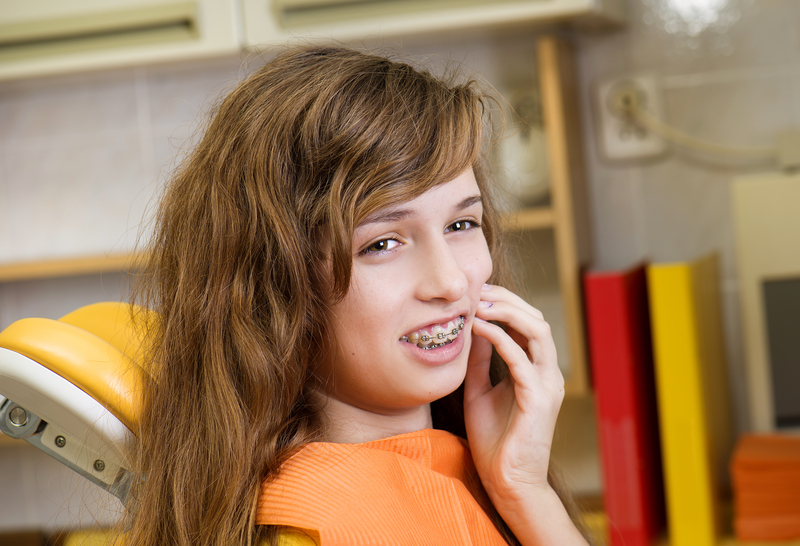
One of the most common questions orthodontists receive is “will it hurt?” The answer to this question varies between patients because every mouth is different, and everyone has different perceptions of pain or discomfort. Yes, braces make the teeth and tissues sore. The good news is that orthodontic patients respond well to simple pain management strategies. The discomfort associated with orthodontics is also not felt throughout the duration of treatment. Temporary discomfort occurs when braces are tightened, or when teeth undergo an increase in pressure to shift them into a new position. Learn more about pain management when you have occasional braces discomfort and how to make your experience more comfortable.
Receiving Braces
As you become accustomed to your new braces, your teeth will likely be tender and you may experience a dull ache for the first 2-4 days. Remember, you just had brackets cemented to each tooth, which is bound to cause discomfort. The reason for this discomfort isn’t completely understood. However, research has shown that when pressure is applied to the teeth, it changes your blood flow. You body also secretes certain proteins such as “substance p” and “prostaglandins”. This applied pressure of the brackets and archwire basically triggers the body’s inflammatory response—the same response you feel when you’ve injured a part of your body.
We recommend that our patients eat soft foods during this initial adjustment period. Often, patients need pain management methods after each time your braces are tightened as well. If needed, you can use an over-the-counter pain reliever such as Tylenol. Some of our patients also find a warm saltwater rinse helpful for pain management. Accessory appliances such as rubber bands, springs or headgear also cause teeth to become sore in some patients. When wearing these appliances as prescribed, your sensitivity will typically go away in 2-4 days or even sooner.
Does Your Braces Type Matter?
There are several different types of braces you can receive to straighten your teeth. All of the orthodontic treatment methods we have will most likely make your teeth a little bit sore. This is because your teeth are moving into a straighter position. In order for them to move, there will be discomfort, and that discomfort will be similar with the different braces options you choose. The braces options we offer for your orthodontic treatment include: traditional metal braces, lingual braces, ceramic braces and Invisalign.
We wish that we could say you will never have discomfort with your braces. However, you are moving the position of your teeth, which has been permanent up until the point where you chose to receive orthodontic treatment. Moving something permanent is bound to cause a little bit of discomfort, however, that discomfort generally last less than a day. Some patients don’t feel discomfort at all or don’t with every braces adjustment.

Orthodontic Treatment Options
- Metal Braces – Metal braces are the most common type of braces. They are made out of metal brackets attached to the center of each tooth. A metal archwire connects these brackets that are cemented to the teeth. When you come in for your braces adjustment, we will tighten your wires. Your teeth shift constantly and the wires need to be adjusted accordingly. We will adjust your wires each time you come in. The adjustment is slight, but may cause you discomfort. This generally lasts for only the first 24 hours (if at all). We often use rubber bands to bring crooked teeth into place. You may feel discomfort with these rubber bands as well, but only for a similar short time period.
- Ceramic Braces – These braces are very similar to traditional metal braces, except that the materials are made out of ceramic. This helps decrease demineralization that generally happens to the teeth with metal braces. The structure of this type of orthodontic treatment is very similar, so patients can expect about the same level of discomfort (if any) as they would with metal braces. Pain management strategies are the same for these types of braces as well as for lingual braces.
- Lingual Braces – These are metal braces attached to the back of each tooth. Traditional metal braces are attached to the front of the tooth, and lingual braces are attached to the back. This will create a slightly different experience when the wires are adjusted at an orthodontic visit. A patient may feel that their teeth are more sore on the back than the front. This is because the metal is bonded to the back of the teeth instead of the front. However, discomfort is minimal and will go away quickly.
- Invisalign – Invisalign is a series of transparent aligners that work to shift your teeth into place. Even though they don’t involve brackets, they are a type of retainer that shifts your teeth. You replace these aligners every 1-2 weeks, so you can expect some discomfort every time you change your aligners. However, if you replace your aligner at night, you can sleep through most of the adjustment period where patients typically experience discomfort.
Pain Management with Braces
Pain management is easy when it comes to braces. Millions of people receive braces each year and millions deal with slight discomfort, if any. It’s typical to be slightly sore after receiving braces or an adjustment. However, if you have a braces emergency, come into our office immediately. An emergency consists of: lip and cheek sores, loose bands and brackets, pokey archwires, loose or missing elastic tie, or accidents that caused trauma to your mouth. Many patients find that having their braces is a breeze, and the beautiful smile they receive at the end is quite worth the time it takes with braces. If you have more questions about pain management with your braces, call Belmar Orthodontics today at (303) 225-9016!
Know Your Orthodontic Options
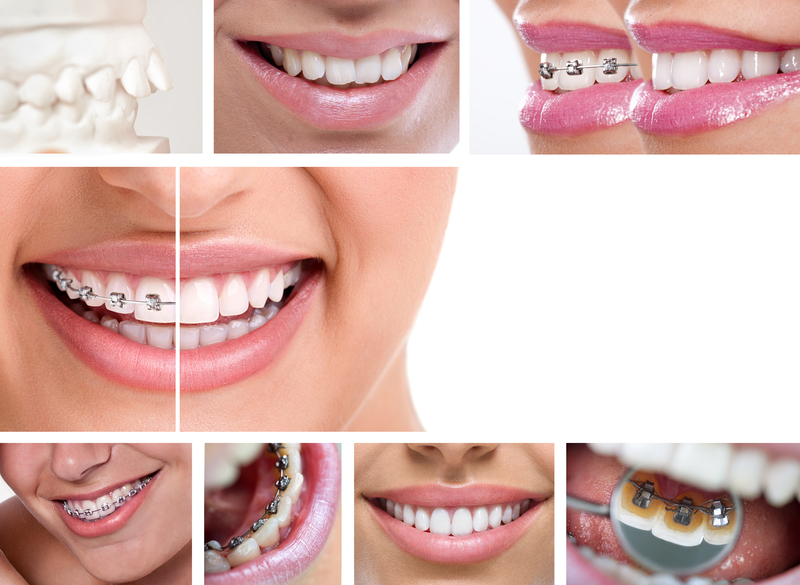
Orthodontic options for the world at large are diverse and exciting. Patients can choose from retainers to clear aligners to invisible, metal, ceramic and micro braces. Each orthodontic option has their advantages and disadvantages. Orthodontists have the specialized knowledge to council you on all your orthodontic options. Their recommendations are based on variables like your age, possible jaw imbalances, differences in the size of your teeth, your personal preferences and more. Orthodontists are trained to know what to use and when to use it, and will work with you to make the best decision.
How Orthodontics Can Benefit You
Many people know that it’s important to have a dentist. However, it’s also very important that you have an orthodontist as well. You can brush and floss your teeth several times a day, but still remain at risk for tooth decay. Teeth that are crooked are teeth that can trap food particles much easier than straight teeth. They are also harder to clean, meaning that that food can stay trapped and lead to tooth decay. If you invest in one of our many orthodontic options, we can straighten your teeth and reduce your risk for decay.
Straightening your teeth can also lead to higher self-esteem and confidence, as has been proven in many studies. Even children benefit from more confidence around peers and friends when they have straight teeth. At Belmar Orthodontics, we see children starting at age 7 and up through adulthood. We provide our patients many orthodontic options so that they can choose how they want to straighten their teeth and how they want to look while doing so. Our orthodontic options include traditional metal braces, ceramic braces, lingual braces and Invisalign treatment.

Traditional Metal Braces
When you think of braces, you probably think of traditional metal braces. These are our most popular orthodontic options available to patients, and the option chosen most often. These braces consist of a metal bracket that is attached to the center of each tooth that holds a metal archwire in place. Metal braces have proven themselves as one of the best ways to straighten your teeth, and are the most economic options our patients have. It is also the option used to correct bite and alignment problems, especially in children.
They are the same size and shape as metal braces and work the same way. However, ceramic braces are made out of ceramic material. Ceramic material is naturally white and will blend in with the color of your teeth. This makes them very hard to notice as compared to traditional metal braces. Another benefit of ceramic braces is that the ceramic material decreases your chances of demineralization, which can happen to some patients who wear metal braces.
Patients of all ages can wear metal braces. Kids love our ceramic clear braces and the ability to dress them up with colorful, bright bands of their choosing. Adults love them because they stay more hidden than traditional metal braces do. However, if you are looking for the sturdiness of brackets but don’t want them to be noticeable, consider investing your time in lingual braces.
Lingual Braces
You may know these braces by the names “nano braces” or “micro braces”. These are simply other names to describe these “incognito” braces. They are metal braces just like you would find traditionally worn by millions. However, the metal is permanently attached to the back of the teeth with dental cement along with the archwire. These braces are invisible when you smile, allowing you to share your beautiful smile with confidence during your treatment. They work similarly to Invisalign transparent aligners. However, you won’t have aligners that you are always removing.
Lingual braces are not right for every patient. Patients who have a deep vertical overbite won’t be able to fit these braces behind their teeth. Adults who have normal-sized teeth are the best candidates. It’s that teeth size that makes it one of our orthodontic options not available to children.
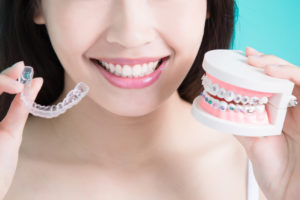
Invisalign
Many adults and teenagers are self-conscious about their appearance, especially when it comes to their smiles. Many view braces as something that children receive, not adults. However, you may be surprised to find that about 25% of people wearing braces are adults and only about 25% of braces wearers are actually children. That means that the majority of braces wearers are teens and adults. We know that adults need to look professional and exude confidence so that they can excel socially, professionally and emotionally. Luckily, we live in a day and age where you can straighten your teeth without others ever knowing.
One of the most inconspicuous ways you can straighten your teeth is through Invisalign treatment. This is a series of transparent aligners custom-made for you. You will switch out these aligners for new ones every 1-2 weeks so that your teeth slowly move into place. Invisalign treatment is the best out of all your orthodontic options that allows you the most freedom with your oral health. You can remove the aligners for eating, drinking, playing sports and for cleaning your teeth as you normally do. This option is not always available for children, but is available for teenagers and adults who are less likely to lose them.
Know Your Orthodontic Options
Orthodontics is a major investment in your oral health and in your life. Having a straighter smile can give you confidence and self esteem you didn’t previously have. Studies show that a better smile can help land you a job easier than those who have crooked teeth. As one of the most-noticed physical features you have, you want to invest your time in straightening your teeth. To find out more about our orthodontic options, call Belmar Orthodontics today at (303) 225-9016 and straighten your teeth today!
Braces for Adults—Because A Beautiful Smile Is Ageless
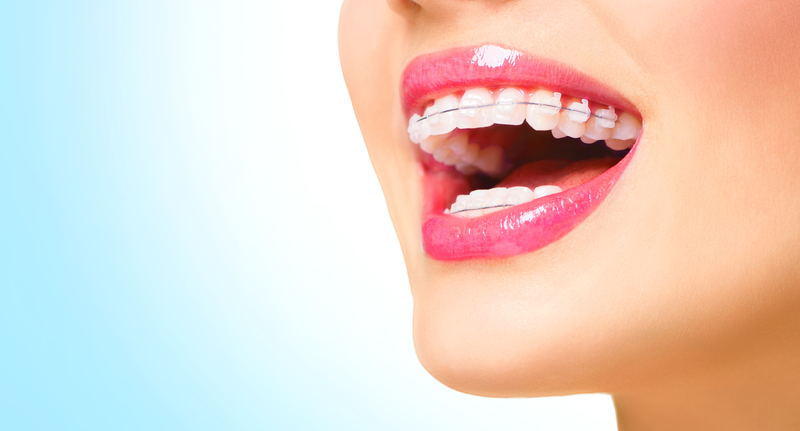
With advances in orthodontics in recent years, more and more adults are seeking out treatment for oral conditions they’ve lived with since childhood. Adults now comprise 50% of orthodontic patients—a major jump from previous decades. However, a beautiful smile knows no age limit. Today’s orthodontic patient has options for braces that they never had before. Learn your options for orthodontics as an adult and why you shouldn’t put off treatment just because you are an adult.
Braces Help Your Oral Health
Most people know that braces are for straightening your smile into something beautiful. Not everyone knows that braces can help improve your oral health significantly. If your teeth are crooked, they become much harder to brush, as teeth are at angles that make it difficult to reach every surface of your tooth. Flossing is even harder with crooked teeth. If you don’t properly clean away plaque that coats your tooth enamel, then you will most likely find yourself with some form of tooth decay or signs of gum disease. Cleaning your teeth also becomes a daily struggle, as you must clear away plaque every single day to avoid oral health issues.
Teeth that are straighter are much easier to clean and they take less time. The American Dental Association recommends brushing your teeth at least twice a day to remove plaque that erodes away your tooth enamel. Patients should also floss at least once a day. Those tasks are very easy to do when your teeth are straight and you can clean them in just a minute or two. Orthodontics is also great because an orthodontist has been to dental school and can direct you to a dentist if they notice oral health issues forming.
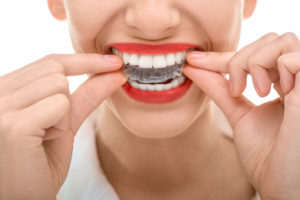
Correcting Bite and Alignment
Having proper bite and alignment is critical for speech. We treat children often for bite and alignment issues, as these are easily correctable when a person is young and the jaw is still forming. For child orthodontics, we take special care to ensure that the upper and lower jaws line up with one another properly. An incorrect alignment can put you at risk for broken teeth later on in life and can affect your ability to speak, eat, bite and chew correctly.
Although it is more difficult to do as an adult, we can perform orthodontic treatments that can correct bite and alignment issues. If you have had a speech impediment all your life due to bite or alignment issues, you can finally find a remedy through orthodontic straightening! For severe cases of bite and alignment issues as an adult, surgical orthodontics may be the best way to transform your smile.
Get Ahead Professionally
There are around 4.5 million Americans that receive orthodontic treatment via braces each year. 25% of those patients are adults. In fact, each year more and more adults find themselves with adult braces. Not only can orthodontic treatment help your oral health, but it can also help get you ahead professionally. Studies show that those who receive orthodontic treatment appear more confident, successful, trustworthy and attractive to their peers. People with straighter teeth are considered happier and healthier. They are also 38% more likely to be perceived as smart. Your teeth are one of the first facial features others notice. Make an impression that will wow others by straightening your teeth!

Your Treatment Options
Adults get the best deal when it comes to orthodontics: they have every option available to them! Children and teenagers are limited in their orthodontic options, but adults can choose what orthodontic treatment they want. You can choose traditional metal braces to straighten your teeth, ceramic braces, lingual braces or Invisalign treatment. Ceramic braces are similar to traditional metal braces, except that they are made from naturally-white ceramic material. Even the archwire can be made white like the brackets to blend in with the whiteness of your teeth.
Lingual braces are one of our most popular adult braces options. These are essential metal braces that are custom-made to fit the back of each of your teeth. We take impressions of your teeth and create a metal shell for your tooth-back complete with brackets and an archwire. Others won’t realize you have adult braces because this hidden apparatus lies on the tongue-side of your teeth.
For an even more discrete straightening option (which is a favorite among adults), you can invest your time in Invisalign. This is a series of transparent aligners that we custom-make for your teeth. Using digital technology, we can map out the trajectory of your teeth as they straighten and make aligners you can wear and switch out every 1-2 weeks. Adults love this option because they have the freedom to remove the aligners as they please. You can remove them for eating, sports activities, and cleaning your teeth as you normally do. This is an option that provides amazing freedom while undergoing adult braces treatment.
Receive Your Adult Braces today!
There are many benefits for receiving adult braces. You can improve your oral health and decrease your risk for tooth decay and gum disease. You can boost your confidence, correct bite and alignment, and exude success with a straighter smile. If you would love to have the benefits associated with adult braces, call Belmar Orthodontics today at (303) 225-9016 and we’ll find a treatment plan that’s right for you!
How Braces Design Has Evolved
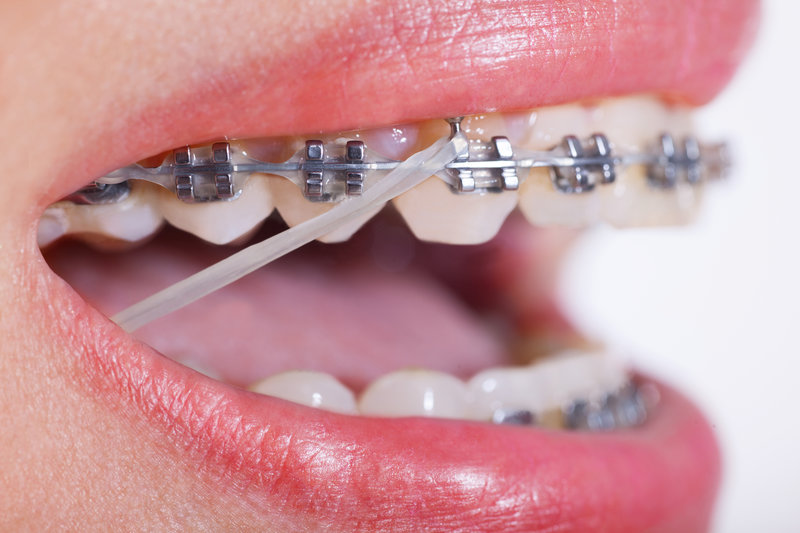
Did you know that orthodontic care dates back many centuries? The Ancient Egyptians, Romans and more all had methods for straightening the teeth. Some methods worked, while others were just downright painful. In modern times, braces design in orthodontia has been perfected. Each part of the braces is important and plays a role in straightening the teeth. Find out how braces came to be and why they are designed a specific way to get your teeth straight in as little time as possible!
Ancient Orthodontics
Braces design and orthodontic work itself has been around for many centuries; it’s not just something that we enjoy today! In fact, researchers have found that the Ancient Greeks, Etruscans, and the Romans were all some of the cultures that practiced orthodontia. However, their methods were vastly different than the methods used today. For example, in all of these cultures, braces design was different than the brackets and wires we know and love. The ancient Egyptians, however, did use metal bands around their teeth. These metal bands were found on mummified bodies, showing that even in death people valued the aesthetics of a straighter smile.
Ancient philosophers and physicians had to guess at how best to straighten the teeth. Some physicians forcefully pulled the teeth with crude tools until they were straight. In some of these cases, the resulting loose tooth had to be strapped to an adjacent tooth in order to heal into place. Methods such as these were just downright painful!
Evolving Braces Design
In later centuries, more and more philosophers and physicians experimented with better braces design. Europeans in the 17th and 18th centuries began using wax molds to make impressions of the teeth. Some also found plaster to be useful in making models of the teeth. Models allowed physicians to view the teeth in their crooked state and then plan how they wanted the teeth to eventually look. Pierre Fauchard is considered the “Father of Dentistry”. He created strips of metal that had spaced holes that fit around the teeth. This is a baseline design of the brackets and wires braces design that is used today to fix tooth alignment.
Even though Fauchard made some worthy orthodontic advancements, Edward Hartley Angle is actually the one considered to be the “Father of Modern Orthodontics.” He made a very effective braces design and also identified malocclusion (or misalignment) and how to correct it properly. Eventually in the 1970s, orthodontists were sticking to the braces design of attaching brackets to the teeth and fitting an archwire around both the upper and lower jaws.
Modern Orthodontics
In eras past, braces design was done according to the needs of adults. Children did not commonly receive orthodontic care, whereas in modern times they do. Early orthodontic care for children is needed to correct bite and alignment issues that can become severe later in adolescence and especially in adulthood. Once a child has this early orthodontic care, they will later receive braces once more to straighten the permanent teeth as they come in. Many people, therefore, have braces twice in their life if they choose to have orthodontic care. In modern times, around 4.5 million people each year wear braces.
Traditional metal braces are the most popular option available to patients, and are the most effective at straightening the teeth. However, technology also allows patients to choose lingual braces, ceramic braces and Invisalign transparent aligners. Lingual braces are metal and are attached to the inside of the teeth (tongue-side). Clear, ceramic braces are made from ceramic material and mimic the same design as traditional metal braces. However, they help decrease demineralization and their white material blends into the color white of the teeth. Invisalign is a system of transparent aligners that a patient can switch out every 1-2 weeks. The most aesthetically pleasing option, it also allows patients to remove the aligners for normal brushing, eating, cleaning, and more.
Parts of Braces
In order to take care of your braces well, it’s important to know about all the different parts and why they are important. We will use traditional metal braces as an example. The individual elements that work to correct your teeth are referred to as the “appliance.” The main parts of your metal braces will include:
- Bands – Patients will have a thin ring fitted to their back molars when receiving braces. This ring is typically made of stainless steel and is used to secure other orthodontic attachments, such as hooks, brackets, or tubes.
- Brackets – A bracket can either be bonded to the tooth using a tooth-colored cement or it can be attached to a band. They are usually made of stainless steel or clear ceramic depending on the type of braces design you choose. They guide and support the archwire into the appropriate placement.
- Archwire – This is held by brackets or other orthodontic attachments. The archwire is designed to guide the shifting of the teeth during treatment. These wires are traditionally made from stainless steel, but can also be made of titanium.
- Elastics (rubber bands) – These rubber bands help create a force to move the teeth in a particular direction. These are especially helpful for pulling down or pushing very crooked teeth into place. The elastics are often attached to a molar band and upper ball hook.
- Elastic Ties – Elastic ties are small rubber bands that go over the brackets. These hold the archwire in place. They are available in a variety of colors that patients can switch out every time they come in for a check-up.
- Springs – Using the force of a small spring, a space can be opened or closed between the teeth. These springs go between brackets and around the archwire. They are usually made out of stainless steel or titanium.
Get Fitted for Your Braces
Braces are an amazing way to straighten your smile. Braces design has been perfected to get your teeth straight in no time. To get fitted for your set of braces, call Belmar Orthodontics today at (303) 225-9016.
Products that Make Cleaning Braces Easier
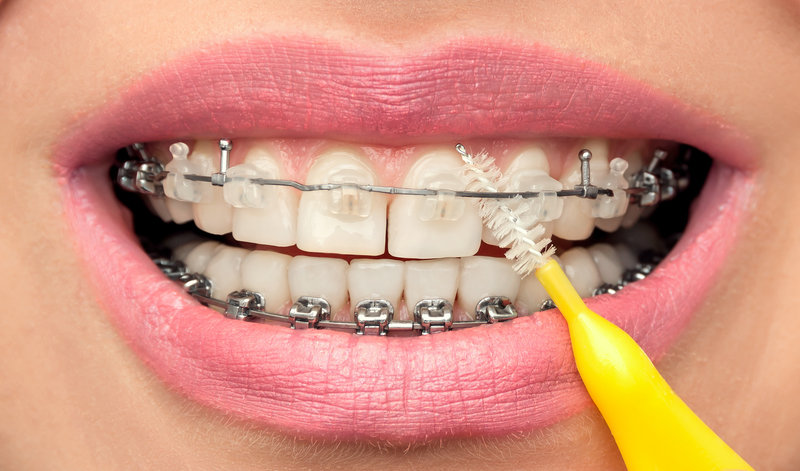
Cleaning the teeth can be hard at times. Cleaning braces on the teeth can be even harder because of all the appliances attached to the enamel. Proper care must be taken with brackets and wires to ensure that all food is removed from the teeth. Brushing and flossing in general helps decrease your likelihood for tooth decay, gum disease, and other oral health issues. Brushing and flossing is different for a smile with braces. There are more guidelines for proper oral hygiene with orthodontic care. Thankfully, there are also products out there (such as flossers) that help make cleaning braces and your teeth easier. Find out how to properly care for your braces and what products can help make cleaning braces easier!
Braces Are Unique to Each Person
Millions of adults will receive braces each year. In fact, there are about 4.5 million people wearing braces annually. In the past, those braces used to all be the traditional style of metal brackets. However, modern technology now affords patients the options of lingual braces, clear ceramic braces, and Invisalign as well.
- Lingual Braces – Many patients want the strength of metal brackets without the braces being so noticeable. Lingual braces are perfect for these patients, as the metal apparatus is attached to the inside of your teeth instead of the outside. You can straighten your teeth without anyone knowing!
- Clear Ceramic Braces – There are other patients that love metal brackets but don’t want the metal to overwhelm their face. Clear ceramic braces are a great option for those who still want brackets, but want them to blend in more with the teeth. Made from ceramic material, these brackets are very durable, naturally help combat demineralization, and are white just like your teeth.
- Invisalign – For a truly invisible straightening system, Invisalign can align your pearly whites discreetly and comfortably. This is a series of removable transparent aligners that you change out every 1-2 weeks. You can take out the aligners for regular brushing and oral care, sports, eating, and more.
Cleaning Braces with Help
It’s vitally important that you take extra good care of your teeth with braces. This is a time when tooth decay can occur in many parts of your mouth. Brackets and wires in your mouth make it easier for food particles to get stuck, leading to other dental issues if proper care is not taken. With braces, we suggest brushing your teeth after every single meal instead of just twice a day. You can use a regular toothbrush, but make sure it is one that you will actually want to use. The toothbrush should have soft bristles so it’s easier on your tooth enamel and the head should fit comfortably in your mouth. Brushing after each meal can help prevent staining and bacteria buildup.
When brushing, brush down from the top, then up from the bottom on each tooth with a bracket. After brushing with your toothbrush, you can get an extra clean by using a proxabrush. This is a special oral health brush that looks very similar to a Christmas tree. It is actually sometimes referred to as a “Christmas tree brush”. You use this small brush by placing it between two brackets below the archwire. Then you brush up and down to dislodge any food you may have missed with brushing or that you didn’t even realize was there. After several strokes, repeat this motion by inserting the brush from the opposite side. For those who want an extra clean, you can use an oral irrigator to blast away food.
What About Flossing?
Many patients have problems flossing the teeth. The main problem is that flossing takes time, and many people either don’t have the time to floss properly, or don’t want to take the time to do it. How well you floss can make quite the difference on what happens to your teeth during your time with braces. Food can easily become stuck in brackets, but we know that food definitely gets stuck between the teeth. This happens even without braces! You may be a pro at cleaning braces, but you also have to be a pro at flossing your teeth with them as well. How do you do this with that pesky archwire that’s in the way?
There are products just for this problem. Use a threadable floss or a floss threader to get the job done. A floss threader is a tool you can use to pull your regular floss through each space between the teeth. Think of a floss threader as a large sewing needle of sorts. You place your floss through the threader. Then, just as a person does with sewing, you will thread the floss threader through each space between the teeth. There is also special floss that has a hard end that is about 2-3 inches in length. Each floss piece can be threaded with the harder end without an additional threader. Every time you floss, make sure to move it back and forth in each space between the teeth, taking care not to apply force or pressure against the archwire.
Cleaning Braces is Easy
You are going to be wearing your braces for 18-24 months, so you’ll have to become comfortable cleaning them efficiently if you want a great smile in the end! Cleaning braces will become second nature to you if you do it often enough. Cleaning braces will help your smile be more beautiful at the end of treatment and will help avoid tooth decay, enamel erosion, demineralization, stains and more. You only get one smile in this life, so treat it right! Many patients benefit from learning more about how to clean their braces and tips and tricks to doing it right and quicker. If you want to learn more about cleaning and caring for your braces, call Belmar Orthodontics today at (303) 225-9016!
No Need to Fear Orthodontic Treatment!

When it comes to straightening your teeth, braces are actually quite fun to wear! You don’t need to fear orthodontic treatment, even if you’re just a child. There are about 4.5 million people each year that wear braces. A large part of those are teenagers, but at least 1/4th are adults and many more are children. Most patients find that they actually like braces and all the benefits they bring to their smile. Orthodontic treatment can actually make your teeth prettier, easier to clean and can help you in so many ways throughout your life. Find out just how fun (and healthy) orthodontic treatment can be for you and why you should invest in it today!
Braces Make You More Confident
Some patients may fear orthodontic treatment (a.k.a braces) because they think they’ll look childish, or they’ll have a mouth full of metal. Others fear the unknown. Technology has come a long way in year past, allowing patients more options for straightening their teeth. You can choose to have traditional metal braces that you can dress up with color bands. However, you can also choose ceramic braces that blend in with the white of your teeth. There are also stealthy ways to straighten your pearly whites with lingual braces that are worn on the inside of the teeth. Invisalign transparent aligners also allow you to straighten your smile without anyone knowing.
In a study conducted by Invisalign, they found that receiving orthodontic treatment made teens and adults more confident. That confidence helped them to feel more successful and be more successful. In their study, people perceived people to be more attractive, trustworthy, and smarter when they straighten their teeth. Orthodontic treatment is something to be excited about instead of feared because of all the amazing benefits that treatment gives a patient.
Orthodontic Treatment Makes You Healthier
Dentistry and orthodontics are closely related although they are vastly different. Even though an orthodontist won’t correct cavities for you, he can can you prevent them in the first place. Straighter teeth are teeth that have fewer cavities than teeth that are crooked. Why? When the teeth are crooked, they are much harder to clean. The American Dental Association recommends brushing the teeth at least twice a day and flossing every single day. What if your teeth are so crooked that you can’t floss between them? What if you can’t reach certain areas to brush away the plaque that builds up every day?
Tooth decay is what happens when you don’t keep the teeth clean and free of plaque. Plaque is a sticky, acidic substance that erodes away your tooth enamel. Every time you eat or drink, sugar mixes with bacteria in the mouth to form plaque, which eats away at your teeth. If you can’t clean the teeth properly, you’ll soon have tooth decay all over. Straightening the teeth will instantly lower your risk for cavities and oral issues. Even children receive braces for bite and alignment problems while they are young to prevent the progression of problems that can become severe later on.
Children and Braces
Children younger than 10 often wear braces. Why? There is usually a problem with bite or alignment that needs to be corrected. Why don’t we correct those issues later on in life? Studies have found that the jaw continues to grow a few years into adolescence. Bite and alignment problems are common in many children. Because the jaw is still forming for so many years, it’s easier to correct bite and alignment when a child is young.
We can bring a child’s bite into correct placement with simple orthodontic treatment. When a person grows to be an adult, that orthodontic treatment is much trickier and it takes much longer to correct problems. That’s why we see children when they are young, so we can easily correct problems that could become lengthy and painful later on. With the right orthodontic treatment, correction never has to be painful!
Millions Wear Braces
Did you know that there are over 4.5 million people that wear braces each year? That’s just in the United States! The largest population that wears braces are teenagers and children. That means, that when you have braces, you have millions of other people who are also straightening their teeth alongside you. If you are a student, you will see childen and teens rocking their braces everywhere you go. However, orthodontic treatment isn’t just for kids; it’s for adults as well!
It’s estimated that at least 1/4th of all people with braces are adults. Sometimes, these adults were not able to receive braces when they were younger. Other times, the teeth have just become crooked over time and an adult needs some orthodontic treatment to straighten their smile once more. Orthodontic treatment has become more affordable over time (especially with pay plans), so more and more people are getting their set of braces each year. With millions seeing their orthodontist every month, it can’t be that bad. You will actually start enjoying your orthodontic visits, especially as you see your teeth straighten out more every single month. How cool is that?
No Need to Fear Orthodontic Treatment
If braces were scary, millions wouldn’t be wearing them. Braces can make you more confident and successful no matter if you are a child or an adult. They will also give you a beautiful smile that you can watch change every single month. If you have fears about orthodontic treatment and would like to know more about braces, we can help put you at ease. Simply call our Belmar Orthodontics office today at (303) 225-9016 to learn more or to schedule your free consultation!
Do You Need Braces?
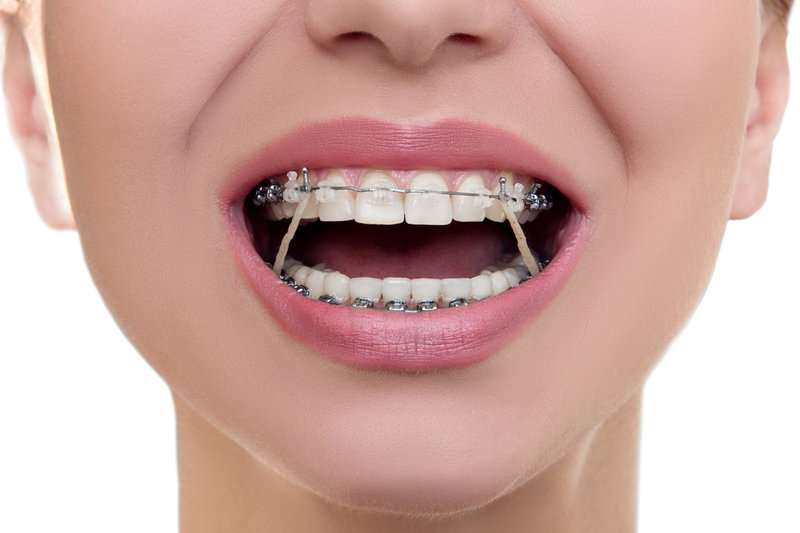
How do you know if you need braces? When you look in the mirror at your smile, do you like what you see? Are your teeth straight or crooked? Is your bite comfortable? Do any of your teeth collide when you bite, swallow or chew? Sometimes it is easy to spot signs that you may need braces, and at other times the signs might not be readily apparent. At Belmar Orthodontics, we work with you and your general dentist to determine the best course for your oral health needs and to determine if you need braces.
Deciding If You Need Braces
Braces is an investment: an investment in your money and an investment in your time. It’s always important to look at factors that determine whether you need braces or not, as you will have braces for about 18 months or so of your life. However, if you do make the choice to receive braces, you can be sure that you are making an incredible investment for your future and for your health. What are factors to consider when deciding if you need braces? Some factors include the status of your smile, your age, health reasons and bite and alignment problems.
Examining Your Smile
Do you love the smile you have? Is it a straight smile or is it crooked? Many patients seek orthodontic care because their smile is crooked or could use some improvement. Orthodontic care makes a huge difference when it comes to straightening your smile quickly and doing it correctly. Only an orthodontist has received the education needed to straighten your smile the best way possible. An orthodontist spends about 10-11 years in training and schooling to do orthodontics. That generally includes 4 years of undergraduate work, 4 years of dental school and an additional 2-3 years training in orthodontics. These professionals truly know what they are doing when they make a plan for your teeth.
If your smile is crooked, you are a great candidate for receiving braces, no matter if you are a child, teenager or an adult. Straightening your smile is one of the best ways to boost your confidence. In a study conducted by Invisalign, it was found almost 30% of people noticed a person’s smile during a first impression. Those with a straighter smile had a better chance at landing a job than someone with a crooked smile. They were also considered to have a better personality, be more attractive and were 58% more likely to be successful. Investing in a straighter smile can really help you go places in life!
Braces for Most Ages
You are never too old to receive braces. Children, teenagers and adults are all sporting various forms of braces all over the world. In fact, in just the United States alone, there are about 4.5 million braces wearers each year. About 1/4th of those are adults and a large portion are children as well. The braces you wear depend on your age. For children, most braces are for correcting bite and alignment problems. For adults and teenagers, the main goal is to straighten those pearly whites.
Your Options
Braces have come a long way in recent years. No longer are traditional metal braces your only option for receiving orthodontic care. You can choose:
- Traditional Metal Braces – These are the tried and true method for straightening the teeth. They are also the most economical choice and the top choice for teenagers. Dress these brackets up with colorful bands at every orthodontic appointment!
- Incognito Lingual Braces – Want the strength of metal braces without having a visible mouth full of metal? Lingual braces are custom-made metal braces for the inside of your teeth (the tongue-side). This hidden apparatus allows you to straighten your teeth in secret, making it a popular choice among adults.
- Clear Ceramic Braces – Ceramic braces are made from ceramic material and naturally are white just like the teeth. Even the archwires can be made white to blend into the teeth better. For braces that feel like metal braces but hide themselves a bit more, ceramic braces may be for you!
- Invisalign Transparent Aligners – This is an options that adults love! Many adults find metal braces to be childish or unattractive. However, Invisalign treatment has proven to be effective in straightening the teeth. This series of transparent aligners gently pushes the teeth into their proper place in about the same time as metal braces. The aligners can be removed for eating, drinking, sports and easy cleaning.
Bite & Alignment Issues
All of our orthodontic options are great for aligning your teeth. Children may need braces if bite and alignment problems are present, and this is actually the reason many children do have braces. During the childhood years, the mouth is still growing and the jaw is still forming. You never want to just let bite and alignment problems go unchecked, as they can create problems such as difficulty chewing, speaking, and talking as well as make the face grow differently and make the teeth harder to clean.
Children with bite misalignments need braces between ages 7-9 to correct problems before they become severe in adolescence and adulthood. This will save a lot of time, pain and procedures later on in life.
Getting Your Braces
There are many reasons that you may need braces. Straightening the teeth makes them easier to clean and can reduce your risk for tooth decay and gum disease. Orthodontic treatment can improve your appearance, boost your confidence and correct problems with your bite that can become severe later on in life. If you need braces, don’t hesitate to schedule your appointment! Call our Belmar Orthodontics office today at (303) 225-9016.
Get Your Braces in Time for Back-to-School

School is just around the corner and it’s time to prepare your peers for your beautiful smile. Braces not only help straighten your teeth, but they can also improve your speech, your appearance and–most importantly–your confidence! New technology gives you more options for adding a little fashion flare to your smile or straightening your teeth discreetly. Learn about all of your amazing options for braces today.
Back-To-School Success
Summer is almost over and it’s back to school time. Is your smile ready? A lot can happen over the summer and each year brings new exciting changes. Getting a straighter, more beautiful smile is something you don’t want to be without as a new year starts off. Did you know that kids with straighter teeth tend to feel more confident in school and around their peers? That confidence can help them get better grades, make more friends, and be more willing to try new opportunities. Every child and teenager alike wants to shine in their own way. You can do that and receive more confidence by getting your braces just in time for school.
In the past, many adolescents saw braces as embarrassing or unattractive. However, studies show that children and teens are receiving braces in much larger numbers than they did in the past. Now, instead of being embarrassing, braces are seen as a luxury for many families and individuals. In times of recession, families even go without necessities to make sure their children receive braces. Braces truly are worth having because of how beneficial they are for boosting self-esteem, confidence and how you’re perceived socially. Investing in them is a great way to help a child as they start off school once more.
Options for Your Braces
We love providing options for our patients at Belmar Orthodontics! Our most popular option for braces for children and teens alike are our traditional metal braces. However, there are other options we provide as well:
- Traditional Metal Braces – This is our most economical option. Our patients love the colorful bands that they can customize their braces with. Each patient can choose a certain color they love every appointment or even do a rainbow of color if they so choose.
- Incognito Lingual Braces – This option is very similar to traditional metal braces, however the braces are worn on the tongue-side of your teeth. We make an impression of your teeth and then custom-make braces that fit the inside of your teeth perfectly. You can straighten your teeth with the perfect hidden apparatus.
- Clear Ceramic Braces – We can provide ceramic braces for our patients. These braces are similar to traditional metal braces, but they are made from ceramic material. The braces blend in with your teeth perfectly as the brackets and even the wires can be made white. Ceramic braces can also decrease demineralization that can happen with metal sometimes.
- Invisalign Teen – This is a version of Invisalign transparent aligners designed with the needs of teenagers in mind. These custom-fit aligners can correct smiles and unevenly-spaced teeth while allowing patients to continue eating, drinking, and cleaning their teeth with ease.
Cleaning At Home
Your braces are something new and exciting. However, they must have proper care to truly work wonders. Brush and floss your teeth often. We recommend brushing and flossing at least twice daily. However, with braces you may want to brush the teeth more than twice a day. After each meal would be best, as food can become trapped in the brackets very easily, where it will then sit on the teeth. Plaque is a sticky, acidic substance that you want to avoid. Plaque is made from the sugars in the food you eat that mix with the bacteria in your mouth. When food is left on the teeth, that plaque can form and begin to erode your teeth.
Not brushing and flossing enough can cause erosion and demineralization that will be obvious once the braces come off. Use special flossers to get in between the teeth sufficiently. Take care of your teeth so that your smile is beautiful and straight without blemishes when your braces come off!
Tips for Success At School
Your braces are easier to manage when you’re prepared. At school, take a mouthguard with you to gym class. You can get injured with braces when playing sports, especially contact sports. A mouthguard will help protect you and your mouth from injury. Be careful what you eat as well. Some foods can damage or break your braces and other foods can get tremendously stuck in the brackets. Some foods to avoid are anything hard, gooey, crunchy or sticky. This includes food items such as gummy bears, fruit snacks, hard candies, chips of any kind, hard vegetables, and nuts. If you really want a food (such as hard fruits and veggies), make sure to cut them up into bite-size pieces. Biting into foods can lodge them into the braces, so be careful with this.
We also have braces kits you can have or tips to make one yourself. Take a kit with you to school that has the cleaning essentials you need: mirror, toothbrush, toothpaste, floss and flossers, wax for pokey wires, etc. If you need a quick cleaning or a quick fix for a wire, you’ll be set!
Your Free Consultation
There never was a better time to straighten your smile! Braces can provide your child the boost of confidence they need to start of the school year right. If you want to schedule your child’s appointment, call our Belmar Orthodontics office today at (303) 225-9016!

